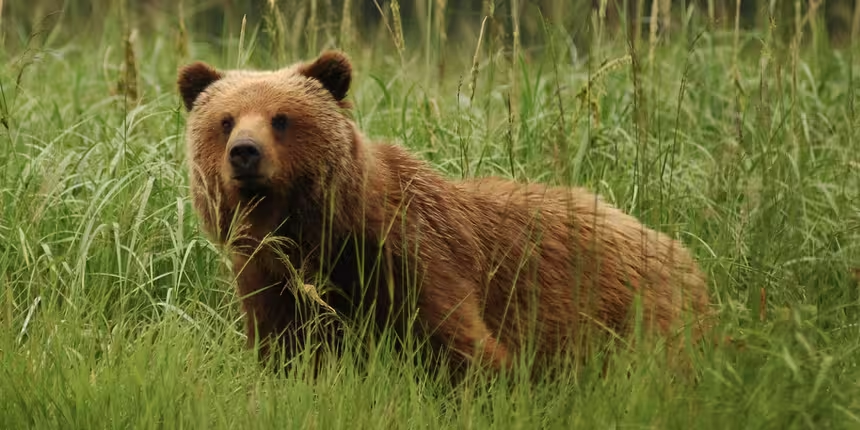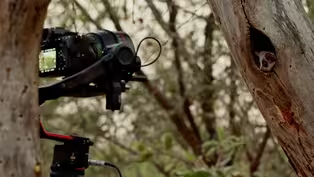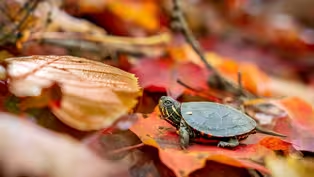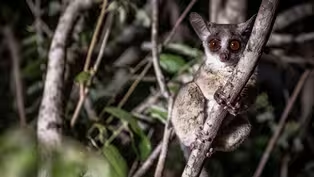
How Nocturnal Bush Babies Survive at Night
Clip: Season 42 Episode 6 | 3m 2sVideo has Closed Captions
This bush baby learned from his mother where to find an important winter food: acacia gum.
This young bush baby learned from his mother where to find an important winter food: acacia gum. A large and reliable source can be found half a mile away, but he must navigate through the dense forest to get there.
Problems playing video? | Closed Captioning Feedback
Problems playing video? | Closed Captioning Feedback
Major support for NATURE is provided by The Arnhold Family in memory of Henry and Clarisse Arnhold, Sue and Edgar Wachenheim III, The Fairweather Foundation, Charles Rosenblum, Kathy Chiao and...

How Nocturnal Bush Babies Survive at Night
Clip: Season 42 Episode 6 | 3m 2sVideo has Closed Captions
This young bush baby learned from his mother where to find an important winter food: acacia gum. A large and reliable source can be found half a mile away, but he must navigate through the dense forest to get there.
Problems playing video? | Closed Captioning Feedback
How to Watch Nature
Nature is available to stream on pbs.org and the free PBS App, available on iPhone, Apple TV, Android TV, Android smartphones, Amazon Fire TV, Amazon Fire Tablet, Roku, Samsung Smart TV, and Vizio.
Buy Now

Explore More Ways to Watch
Bring the beauty and wonders of wildlife and natural history into your home with classic NATURE episodes.Providing Support for PBS.org
Learn Moreabout PBS online sponsorship- [Narrator] He has learned from his mother where to find an important winter food: Acacia gum.
(insects chirping) A large and reliable source can be found a half-mile away.
He must navigate through the dense forest to get there.
As he goes, he uses another skill he learned from his mother: to pee on his hands.
It is a way of scent marking, and the super sticky urine gives him grip.
(bushbaby chattering) A special membrane at the back of his eye reflects and amplifies the moonlight, helping him find his way in the dark.
(exciting music) He makes fast progress.
Bushbaby hind legs are super powered, with stretchy tendons and extra large muscles.
They catapult him from tree to tree at six feet a second.
(air swishing) (music) He's nearly made it to the Acacia gum.
(wind whooshing) But after the moon sets, his vision is limited.
It is risky to keep going when he can't see.
His hearing is now all he has to keep himself safe from predators.
Bushbabies hear higher frequencies than humans, a range that is perfectly attuned to detecting noises in the forest.
(insects chirping) (animals chattering) His enormous ears respond to every sound, every creak, (bushes rustling) as he tries to work out who is friend, who is foe, and what is food.
The coast appears to be clear, and food is just one jump away.
How We Film Tiny Animals | Behind the Scenes
Video has Closed Captions
Clip: S42 Ep6 | 7m 32s | Big Little Journeys filmmakers employ various filming techniques to capture two animals. (7m 32s)
Preview of Big Little Journeys: Home
Video has Closed Captions
Preview: S42 Ep6 | 30s | A baby turtle in Canada and a young bushbaby in South Africa search for a safe new home. (30s)
Tiny Bush Baby Hunted by Dangerous Genet
Video has Closed Captions
Clip: S42 Ep6 | 2m 35s | For a tiny bush baby, danger lurks around every corner in this forest. (2m 35s)
Providing Support for PBS.org
Learn Moreabout PBS online sponsorship
- Science and Nature

Explore scientific discoveries on television's most acclaimed science documentary series.













Support for PBS provided by:
Major support for NATURE is provided by The Arnhold Family in memory of Henry and Clarisse Arnhold, Sue and Edgar Wachenheim III, The Fairweather Foundation, Charles Rosenblum, Kathy Chiao and...



